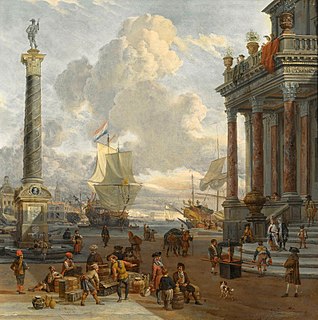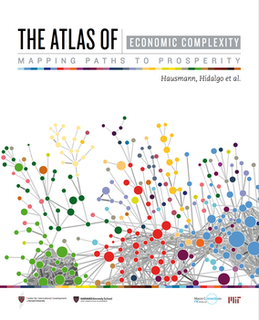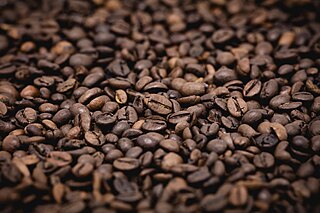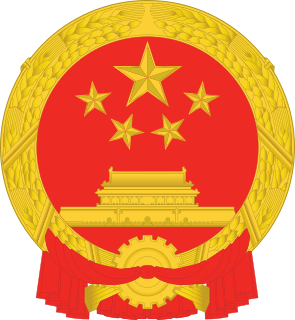 W
WInternational trade is the exchange of capital, goods, and services across international borders or territories because there is a need or want of goods or services.
 W
WInternational trade law includes the appropriate rules and customs for handling trade between countries. However, it is also used in legal writings as trade between private sectors. This branch of law is now an independent field of study as most governments have become part of the world trade, as members of the World Trade Organization (WTO). Since the transaction between private sectors of different countries is an important part of the WTO activities, this latter branch of law is now a very important part of the academic works and is under study in many universities across the world.
 W
WThis is a list of international trade topics.Absolute advantage Agreement on Trade-Related Aspects of Intellectual Property Rights (TRIPS) Asia-Pacific Economic Cooperation (APEC) Autarky Balance of trade Barter Bilateral Investment Treaty (BIT) Bimetallism Branch plant economy Bretton Woods conference Bretton Woods system British timber trade Cash crop Central European Free Trade Agreement (CEFTA) Comparative advantage Cost, Insurance and Freight (CIF) Council of Arab Economic Unity Currency Customs broking Customs union David Ricardo Doha Development Round Dominican Republic – Central America Free Trade Agreement (DR-CAFTA) Enabling clause Enhanced Integrated Framework for Trade-Related Assistance for the Least Developed Countries European Union (EU) Export documentsATA Carnet ATR.1 certificate Certificate of origin EUR.1 movement certificate Form A Form B TIR CarnetEuropean Free Trade Association (EFTA) Exchange rate Factor price equalization Fair trade Foreign direct investment (FDI) Foreign exchange option Foreign Sales Corporations (FSCs) Forfaiting Free Trade Area of the Americas (FTAA) Free On Board (FOB) Free trade Free trade area Free trade zone (FTZ) General Agreement on Tariffs and Trade (GATT) Generalized System of Preferences (GSP) Genetically modified food controversies Geographical pricing Giant sucking sound Global financial system (GFS) Globalization Gold standard Gravity model of trade Gresham's law Heckscher-Ohlin model Horizontal integration Import Import substitution industrialization (ISI) International Chamber of Commerce (ICC) International factor movements International law International Monetary Market (IMM) International Monetary Fund (IMF) International Trade Organization (ITO) Internationalization Internationalization and localization (G11n) ISO 4217 Leontief paradox Linder hypothesis List of tariffs and trade legislation Maquiladora Mercantilism Merchant bank Money market Most favoured nation (MFN) Nearshoring New Trade Theory (NTT) North American Free Trade Agreement (NAFTA) Offshore outsourcing Offshoring Organisation for Economic Co-operation and Development (OECD) Organization of the Petroleum Exporting Countries (OPEC) Outsourcing Purchasing power parity (PPP) Rules of origin Safeguard South Asia Free Trade Agreement (SAFTA) Special drawing rights (SDRs) Special Economic Zone (SEZ) Tariff Tax, tariff and trade Terms of trade (TOT) Tobin tax Trade Trade barrier Trade bloc Trade facilitation Trade Facilitation and Development Trade finance Trade pact Trade sanctions Trade war Transfer pricing Transfer problem United Nations Monetary and Financial Conference Uruguay Round Wage insurance World Intellectual Property Organization (WIPO) World Intellectual Property Organization Copyright Treaty World Trade Organization (WTO)
 W
WAir Cargo World, published in the United States, is an air logistics magazine and is edited for shippers and others involved with the worldwide transport and delivery of perishables and manufactured goods. Its readership consists of logistics professionals, airline and airport executives, freight forwarders, importers, exporters, and others who manage or purchase transportation products and services within the airfreight supply chain.
 W
WThe Atlas of Economic Complexity is a 2011 economics book by Ricardo Hausmann, Cesar A. Hidalgo, Sebastián Bustos, Michele Coscia, Sarah Chung, Juan Jimenez, Alexander Simoes and Muhammed A. Yıldırım. A revised 2014 edition is published by the MIT Press.
 W
WThe balance of trade, commercial balance, or net exports, is the difference between the monetary value of a nation's exports and imports over a certain time period. Sometimes a distinction is made between a balance of trade for goods versus one for services. The balance of trade measures a flow of exports and imports over a given period of time. The notion of the balance of trade does not mean that exports and imports are "in balance" with each other.
 W
WIn British slang, a booze cruise is a brief trip from Britain to France or Belgium with the intent of taking advantage of lower prices, and buying personal supplies of (especially) alcohol or tobacco in bulk quantities. This is a legally acceptable process and should not be confused with smuggling.
 W
WCross-border cooperation is the collaboration between adjacent areas across borders. In the European Union this is one of the forms of territorial cooperation. The European model is very diverse with cooperation between border regions or municipalities, or through specific cooperation structures. These structures are usually composed by public authorities from different countries organized in working communities, euroregions or EGTCs.
 W
WEconomic integration is the unification of economic policies between different states, through the partial or full abolition of tariff and non-tariff restrictions on trade.
 W
WCoffee is a popular beverage and an important commodity. Tens of millions of small producers in developing countries make their living growing coffee. Over 2.25 billion cups of coffee are consumed in the world daily. Over 90 percent of coffee production takes place in developing countries—mainly South America—while consumption happens primarily in industrialized economies. There are 25 million small producers who rely on coffee for a living worldwide. In Brazil, where almost a third of the world's coffee is produced, over five million people are employed in the cultivation and harvesting of over three billion coffee plants; it is a more labour-intensive culture than alternative cultures of the same regions, such as sugar cane or cattle, as its cultivation is not automated, requiring frequent human attention.
 W
WAn export in international trade is a good or service produced in one country that is sold into another country. The seller of such goods and services is an exporter; the foreign buyer is an importer.
 W
WFlag of convenience (FOC) is a business practice whereby a ship's owners register a merchant ship in a ship register of a country other than that of the ship's owners, and the ship flies the civil ensign of that country, called the flag state. The term is often used pejoratively, and although common, the practice is sometimes regarded as contentious. Each merchant ship is required by international law to be registered in a registry created by a country, and a ship is subject to the laws of that country, which are used also if the ship is involved in a case under admiralty law. A ship's owners may elect to register a ship in a foreign country which enables it to avoid the regulations of the owners' country which may, for example, have stricter safety standards. They may also select a jurisdiction to reduce operating costs, avoiding higher taxes in the owners' country and bypassing laws that protect the wages and working conditions of mariners. The term "flag of convenience" has been used since the 1950s. A registry which does not have a nationality or residency requirement for ship registration is often described as an open registry. Panama, for example, offers the advantages of easier registration and the ability to employ cheaper foreign labour. Furthermore, the foreign owners pay no income taxes.
 W
WGeographical pricing, in marketing, is the practice of modifying a basic list price based on the geographical location of the buyer. It is intended to reflect the costs of shipping to different locations.
 W
WIn computing, internationalization and localization (American) or internationalisation and localisation (BrE), often abbreviated i18n and L10n, are means of adapting computer software to different languages, regional peculiarities and technical requirements of a target locale. Internationalization is the process of designing a software application so that it can be adapted to various languages and regions without engineering changes. Localization is the process of adapting internationalized software for a specific region or language by translating text and adding locale-specific components. Localization uses the infrastructure or flexibility provided by internationalization.
 W
WISO 4217 is a standard published by International Organization for Standardization (ISO) that defines alpha codes and numeric codes for the representation of currencies and provides information about the relationships between individual currencies and their minor units. This data is published in three tables:Table A.1 – Current currency & funds code list Table A.2 – Current funds codes Table A.3 – List of codes for historic denominations of currencies & funds
 W
WThe Italian Trade Agency is a government agency of the Italian Republic whose purpose is to promote foreign trade and Italy's exports. It was established in 1926 with the Decreto reale n. 800 with the name of INE and had the main task of "promoting the development of exports of products coming from the Italian soil and industry". In 1935, the institute also developed specific skills in the field of imports by changing its name to Istituto nazionale per gli scambi con l'estero. Subsequently, in 1945 it took the name ICE - Istituto nazionale per il commercio estero.
 W
WA knock-down kit is a collection of parts required to assemble a product. The parts are typically manufactured in one country or region, then exported to another country or region for final assembly.
 W
WThe live fish trade can refer to the live food fish trade or to the ornamental fish trade. The fish can come from many places, but most comes from Southeast Asia.
 W
WIn international trade, market access is a company's ability to enter a foreign market by selling its goods and services in another country. Market access is not the same as free trade, because market access is normally subject to conditions or requirements, whereas under ideal free trade conditions goods and services can circulate across borders without any barriers to trade. Expanding market access is therefore often a more achievable goal of trade negotiations than achieving free trade.
 W
WThe National Development and Reform Commission of the People's Republic of China (NDRC), formerly State Planning Commission and State Development Planning Commission, is a macroeconomic management agency under the State Council, which has broad administrative and planning control over the economy of Mainland China. It has reputation of being the "mini-state council".
 W
WThe Observatory of Economic Complexity (OEC) is a data visualization site for international trade data created by the Macro Connections group at the MIT Media Lab. The goal of the observatory is to distribute international trade data in a visual form. At present the observatory serves more than 20 million interactive visualizations, connecting hundreds of countries to their export destinations and to the products that they trade.
 W
WTrade barriers are government-induced restrictions on international trade.
 W
WTrade creation is an economic term related to international economics in which trade flows are redirected due to the formation of a free trade area or a customs union. The issue was firstly brought into discussion by Jacob Viner (1950), together with the trade diversion effect.
 W
WTrade diversion is an economic term related to international economics in which trade is diverted from a more efficient exporter towards a less efficient one by the formation of a free trade agreement or a customs union. Total cost of good becomes cheaper when trading within the agreement because of the low tariff. This is as compared to trading with countries outside the agreement with lower cost goods but higher tariff. The related term Trade creation is when the formation of a trade agreement between countries decreases the price of the goods for more consumers, and therefore increases overall trade. In this case the more efficient producer with the agreement increases trade.
 W
WTrade facilitation looks at how procedures and controls governing the movement of goods across national borders can be improved to reduce associated cost burdens and maximise efficiency while safeguarding legitimate regulatory objectives. Business costs may be a direct function of collecting information and submitting declarations or an indirect consequence of border checks in the form of delays and associated time penalties, forgone business opportunities and reduced competitiveness
 W
WTrade finance signifies financing for trade, and it concerns both domestic and international trade transactions. A trade transaction requires a seller of goods and services as well as a buyer. Various intermediaries such as banks and financial institutions can facilitate these transactions by financing the trade. Trade finance manifest itself in the form of letters of credit (LOC), guarantees or insurance and is usually provided by intermediaries.
 W
WCountries of the East African Community (EAC) include Kenya, Tanzania, Burundi, Uganda, Rwanda, and South Sudan. These nations fall below par in different measures of economic activities such as GDP per capita, population below the poverty line, unemployment, and trade. The East African Community has made an effort to bolster trade through enhancing co-operation economically, socially, and politically within the member nations. "The aim of EAC is to gradually establish among themselves a Customs Union, a Common Market, a Monetary Union, and ultimately a Political Federation of the East African States." East African Community countries also have active trade to other parts of the world, like the European Union. Each country is a part of the World Trade Organization except for South Sudan who remains out of this conglomeration. As of 2014, these six countries have a combined GDP of $159.5 billion, GDP per capita of $918, total population of 168.5 million, total import $40.2 billion, and total export $13.6 billion. These countries become much stronger as a part of the community as they become a larger market for trade outside of the bloc. Also, the bloc allows for free trade between the member countries helping not only producers who have more options to sell their product but also consumers who have more cheap goods.
 W
WTrade mission is an international trip by government officials and businesspeople that is organized by agencies of national or provincial governments for purpose of exploring international business opportunities. Business people who attend trade missions are typically introduced both to important business contacts and to well-placed government officials. A trade mission is a way in which countries or organizations can seek out potential buyers and sellers. Trade missions will usually occur after one party has undergone significant market research. In short, trade mission is a trip that is designed to transport business executives into a foreign business environment to achieve International business relationship.
 W
WA trading nation is a country where international trade makes up a large percentage of its economy.
 W
WThe Vogelfluglinie (German) or Fugleflugtslinjen (Danish) is a transport corridor between Copenhagen, Denmark, and Hamburg, Germany.